Get Renew Digital Signature: How to renew DSC online? Know full details here!
Hello friends! In today’s digital age, where most of our activities and business transactions are happening online, the role of Renew Digital Signature has become more important than ever. It is not just a formality but an essential tool to protect your online identity and documents.
Whether you need to apply for government tenders online, file income tax returns, submit GST returns, or sign any online document, many important tasks can get stuck without DSC.
But the validity of DSC is not forever. After a certain period (usually 1, 2 or 3 years), your DSC expires. In such a situation, you need to renew it online. In this detailed blog post, we will answer every question related to DSC renewal – from digital signature renewal charges to its complete step-by-step process, and understand every big and small thing related to it in detail.
Our goal is that after reading this guide, you don’t have to search for any more information related to DSC renewal (or getting a new DSC). So, let’s get started without any delay!
What is Renew Digital Signature and why is it so important?
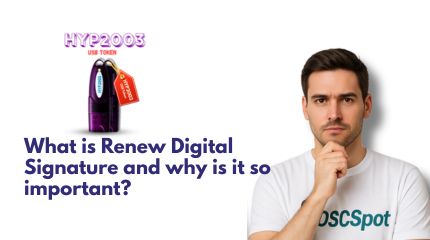
Digital Signature Renewal simply means extending the validity of your existing DSC so that you can use it further. But there is a very important “twist” that is important to understand, as the process is no longer the same as before.
What has changed?
In the last few years, the Controller of Certifying Authorities (CCA) of the Government of India has issued some new and stringent guidelines to enhance the security and technical standards of Digital Signature Certificates. As per these guidelines:
New DSCs can no longer be downloaded directly to the old USB token. The old tokens, which were used earlier, are no longer compatible with the new security features and cryptographic algorithms.
This simply means that the traditional option of ‘renew DSC’ (i.e. just extending the validity) is practically no longer available.
So what happens now?
Today, when your DSC is about to expire, instead of “renewing” it, you will have to obtain a new Digital Signature Certificate. This is like issuing a new DSC, but with new standards and new technology.
Why is this change necessary?
This change has been made to strengthen cyber security. The new USB tokens and DSCs have advanced encryption technology and better security protocols, which make your digital signatures even more secure and protect them from cyber-attacks. This ensures that your online transactions and documents meet the highest security standards.
So if your DSC is about to expire soon or has already expired, do not worry. You just have to obtain a new Digital Signature Certificate, the process and charges of which we will explain in detail below.
What are the Digital Signature Renewal Charges? (Cost of getting a new DSC)
As we explained above, there is no major difference in the price between a ‘renewed DSC’ and a ‘new DSC’ as you are actually getting a new DSC. The price remains almost the same. But there are a few factors that affect the overall cost:
USB Token Status:
If you already have an updated USB token (of a new series, such as HYP2003) and it is compatible, your charges may be slightly less as you don’t have to buy a new token.
Otherwise, you will have to buy the complete package – which will include both a new DSC and a new USB token. In most cases, a new token is required.
The digital signature renewal charges or DSC renewal cost mainly depends on:
Validity Period:
Are you getting the DSC for 2 years or 3 years? Typically, a DSC with a 3-year validity costs a little more per year, but overall it is more cost-effective in the long run and saves you from the hassle of frequent renewals.
Certificate Type:
Signature-only DSC: This is the most common type, used for digitally signing documents and online filing.
Signature + Encryption DSC: This provides additional security. DSC with encryption is used to encrypt confidential data and send secure emails. It usually costs a little more than a signature-only DSC.
Vendor Service Charges:
Different DSC providers have their own service charges, which may include application processing, document verification, technical support and courier charges. These charges depend on the provider’s service quality and additional services offered.
Average Cost:
The average Class 3 DSC can cost around ₹1500 to ₹2500 for a validity of 2 years. If you want to get a DSC for 3 years, it can cost a little more – around ₹2000 to ₹3500. These rates may vary slightly according to the certifying authority, provider and the features you choose (such as signature only or signature + encryption).
A smart tip: You should always confirm the complete and clear breakdown of the DSC renewal price or DSC renewal charges from your digital signature provider beforehand, so that there is no confusion later. For transparency, always know what is included in the total cost.
DSC Renewal Process: How to do it? (How to get a new DSC) – A detailed guide
As we explained, ‘DSC renewal’ now means getting a new DSC. The process is online and is not very complicated, but it requires some attention and following the right steps. Let’s understand it step-by-step and in detail:
Choosing the right DSC provider:
First of all, you need to choose a DSC provider affiliated with a trusted and government-recognized Certifying Authority (CA). It is better to get DSC from reputed CAs like eMudhra, Capricorn, VSign.
Visit the provider’s website and choose a Class 3 DSC as per your requirements (e.g. 2 years or 3 years validity, signature only or signature + encryption).
Collecting the required documents:
You need to provide scanned copies of some documents for your identity and address proof. These are the same documents that you submitted when you first applied for DSC – like Aadhaar card, PAN card, address proof (bank statement, electricity bill, telephone bill).
Make sure that the scanned copies of your documents are clear and readable. Blurry or incomplete copies may delay the application.
You will also need to provide a recent passport size photograph, a valid email ID and mobile number.
Online Application Submission:
Visit the website of the chosen provider and fill the online application form. In this, you will have to fill your personal information and DSC related details.
Fill your information correctly and upload the required documents.
In this process, there will be an OTP verification of your mobile number and email ID. Enter the OTP immediately, as this is an important step for security.
Video Verification (VVC):
After application submission and OTP verification, you will receive an application ID and a video verification link from the provider (this can be sent to your email or mobile).
By clicking on this link, you will have to record a short video of 25-35 seconds. In this video:
You must show your face clearly.
You must show your original ID proof and address proof (which you submitted at the time of application) clearly in front of the camera.
you also be asked to speak a specific sentence or code.
Tips to make video verification successful:
- Be in a quiet place with adequate light.
- The background should be clean.
- Your face and documents should be clearly visible in the camera.
- The internet connection should be stable.
Special Note: If your DSC is being generated from an Aadhaar-based e-KYC portal (where your identity is verified by UIDAI), then there is no need to show physical documents in the video – just your face verification is enough.
Payment Process:
Once your application and video verification is successfully approved, the last step is the payment.
The provider will give you a payment link through which you can make the online payment. Usually, all major online payment options are available – like UPI, credit/debit cards, net banking. Some providers also accept payments directly from your eKYC account.
Be careful while making the payment and ensure that you are using a secure payment gateway.
DSC Download & Delivery
Once the payment is confirmed and your application is fully approved, your new DSC will be ready.
The provider will send your new USB token (with your DSC installed) to your address via courier.
Once you receive the token, you may need to install some driver software on it to use the DSC (providers often provide guides or support for this).
The process is similar across almost every certifying authority – there may be slight differences in the interface and minor details, but all the basic steps remain the same.
Common Issues & Solutions
Some common issues may arise while getting a DSC renewal or new DSC. Here are some of the main issues and their solutions:
Video Verification Rejection or Failed:
- Problem: The video is not clear, documents are not visible clearly, or the voice is not clear.
- Solution: Record in a well-lit place, make sure your face and documents are fully in the frame, and speak clearly. Use a stable internet connection.
Document Rejection:
- Problem: The uploaded documents are blurry, expired, or the name/address does not match the PAN card.
- Solution: Make sure all documents are clear, valid, and updated. The name and address must match the PAN card and Aadhaar card.
Token Driver Installation Problem:
- Problem: The USB token is not being detected in the system or is not working.
- Solution: Make sure you have installed the correct driver software for your USB token. Try plugging the token into another USB port. You can also restart the system.
Software Compatibility Issues:
- Problem: Error related to DSC utility or Java.
- Solution: Make sure you have the latest version of Java Runtime Environment (JRE) installed on your system. Always install and run the DSC utility in ‘Run as Administrator‘ mode.
- Also keep your browser updated and check its settings (such as pop-up blocker).
If you face these issues, always contact the support team of your DSC provider.
How to renew ePass2003 (now known as HYP2003) USB token? (Technical aspects)
If you have an ePass2003 (now known as HYP2003) USB token and are wondering how to renew DSC in it, the process is the same as we have mentioned above for getting a new DSC.
It is important to understand the technical aspect here:
- Incompatibility of old token: A new DSC cannot be directly ‘installed’ in the old ePass2003 token that you have. This is because new DSCs are issued as per new, more secure cryptographic algorithms and hardware-based security standards. Old tokens do not support these new standards. They may have older encryption capabilities that are no longer adequate as per CCA regulations.
- Importance of security: This step is to enhance the security of you and your digital transactions. Tokens such as the new HYP2003 are FIPS 140-2 Level 3 certified, providing the highest level of hardware-based security.
- New token required: So, when you “renew” a DSC (i.e. get a new DSC), you essentially have to get a new USB token as well. Most providers include the new token in the cost of the DSC.
This ensures you have the most secure and up-to-date hardware on which to store your digital signature.
How to choose the right Digital Signature Certificate provider?
- There are many DSC providers in the market, so choosing the right and reliable provider for yourself can be a bit challenging. Here are some important things you should keep in mind while choosing a provider:
- CA recognition and credibility: Make sure the provider is associated with a recognized Certifying Authority (CA) like eMudhra, Capricorn, VSign, etc. These CAs are authorized by the Government of India and their credibility is of paramount importance.
- Transparent and competitive pricing: Compare prices, but don’t just go for the cheapest option. See what all is included in the price (like DSC, USB token, GST, courier). Be careful of any hidden charges.
- Efficient and fast process: Choose a provider that makes the process of getting a DSC simple and fast, including document verification, application and delivery.
- Excellent customer support: Good customer support is a must during DSC installation, usage or any technical issues. See if they offer 24/7 support over phone, email or WhatsApp.
- Online reputation and reviews: Check out the provider’s online reviews and reputation. Experiences from other customers can help you understand how their service is.
- Offer secure token: Make sure they offer a FIPS 140-2 Level 3 certified USB token (such as HYP2003), as this is important for the security of your DSC.
- GST invoice: If you are getting a DSC for business, confirm that they will provide GST invoice so that you can claim input tax credit.
Conclusion: Update your DSC on time and rest assured!
So guys, now you have a complete understanding of how to renew digital signature online (i.e. how to get a new DSC) and what are the charges for digital signature renewal. It is important to know that due to changes in security standards, the old USB token does not download the new DSC, so you will always have to get a new DSC and possibly a new, upgraded token.
Updating your DSC on time is very important to keep your online work smooth, secure, and legally valid. Be it government filings, business transactions, or any other important online activity – a valid and updated DSC is a must. Choosing the right provider and following the process carefully will ensure that you get your DSC without any hassle.
Always keep your digital signature updated to stay safe in the digital world.



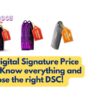

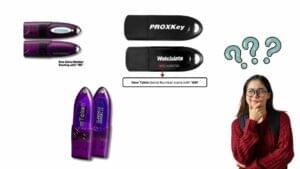


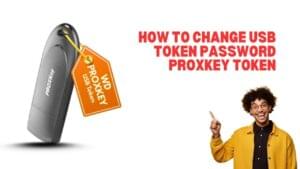
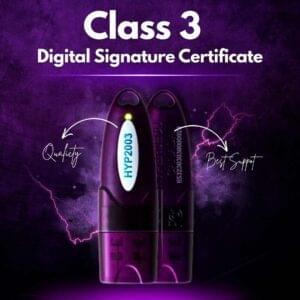
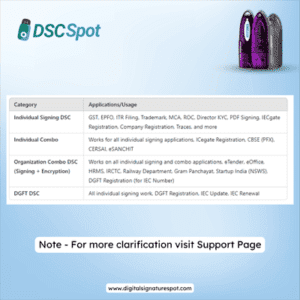
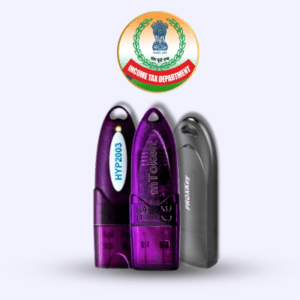
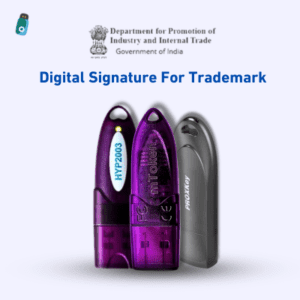
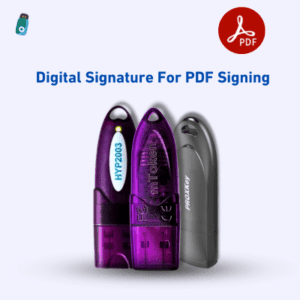
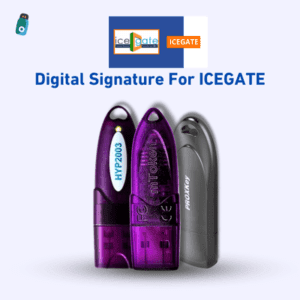
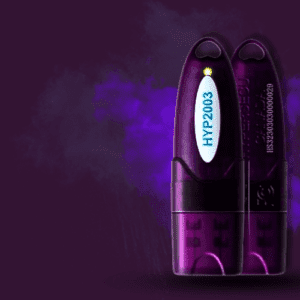
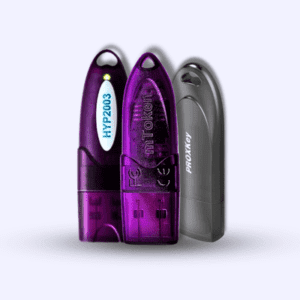
Add comment